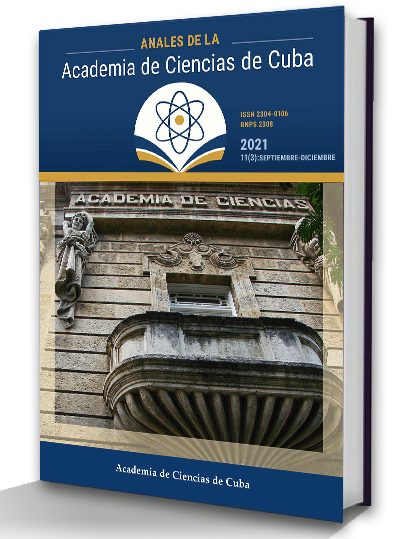Cuban advances in active materials development for energy storage
Keywords:
energy storage, active materials, lithium battery, supercapacitorAbstract
Introduction: The electrical energy storage systems, such as rechargeable Li batteries (BLi) and supercapacitors, are very valuable technologies to meet the needs of the modern automotive sector and photovoltaic systems. The objective of this research is to determine the critical properties of materials for BLi and supercapacitors obtained by the Ionic Conductors (ConIon) research group of IMRE-UH in the last five years.Methods: New strategies for the synthesis and modification of materials were established. The materials were characterized by chemical analysis, HRTEM, SEM, AFM, XPS, FTIR, TG, ATD, DSC, DRX, Raman, 13C NMR, hall effect, voltammetry and chronopotentiometry, among the most important ones.
Results and discussion: The graphene oxide obtained resulted in an excellent anodic material with a conductivity of 1.3 S/cm, a reversible specific capacity of 354 mAh/g for BLi and a capacitance of 160-332 F/g for supercapacitors. The new LiB electrolyte (POE)8-LiClO4-LLTO) showed an ionic conductivity value (2.8E-3 S/cm) that is among the highest reported for a solid polymeric electrolyte. The doped oxide LiP0.1Mn1.88O4 turned out to be an excellent cathode material with a higher specific charge storage capacity and electrochemical stability for the manufacture of high-density LiB batteries. Conclusions: These results constitute a higher point of development in the study of advanced functional materials in Cuba to store electrical energy. New and remarkable findings were presented, fundamentally related to the measurement of the critical properties that determine the application of national active materials to rechargeable Li batteries and supercapacitors.
Downloads
Downloads
Published
How to Cite
Issue
Section
License
The journal Anales de la Academia de Ciencias de Cuba protects copyright, and operates with a Creative Commons License 4.0 (Creative Commons Attribution-NonCommercial License 4.0). By publishing in it, authors allow themselves to copy, reproduce, distribute, publicly communicate their work and generate derivative works, as long as the original author is cited and acknowledged. They do not allow, however, the use of the original work for commercial or lucrative purposes.
The authors authorize the publication of their writings, retaining the authorship rights, and assigning and transferring to the magazine all the rights protected by the intellectual property laws that govern in Cuba, which imply editing to disseminate the work.
Authors may establish additional agreements for the non-exclusive distribution of the version of the work published in the journal (for example, placing it in an institutional repository or publishing it in a book), with recognition of having been first published in this journal.
To learn more, see https://creativecommons.org






